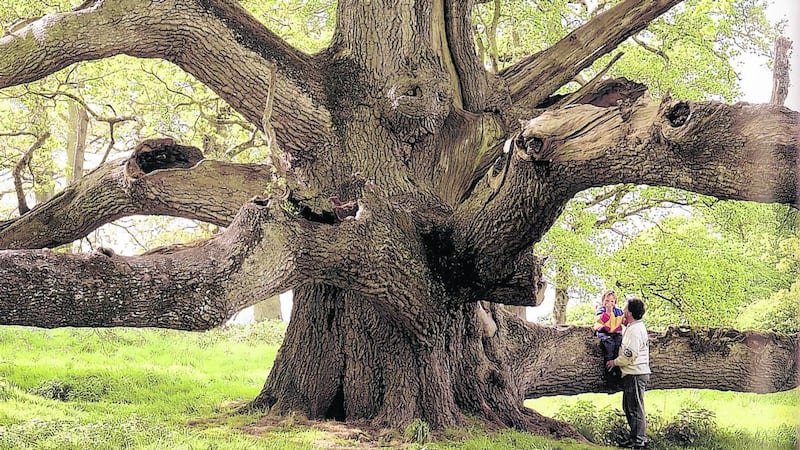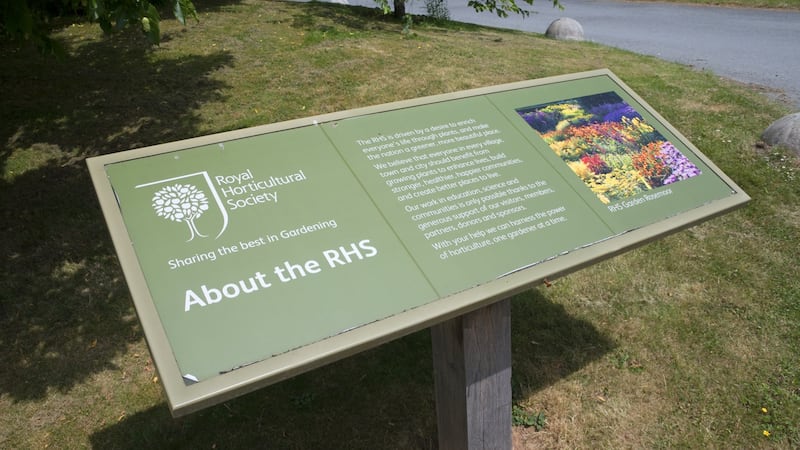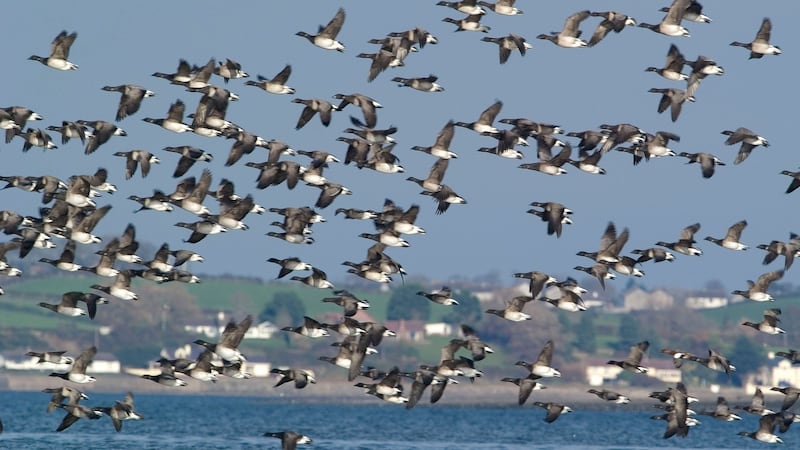As we look forward to a week of celebrating all things Irish, let's give a huge, big, noisy bualadh bos to not one, not two, but three supremely green-fingered Irish gardeners. The trio are being presented this month with a hat-trick of prestigious awards by the UK's Royal Horticultural Society (RHS), for their outstanding contribution to the world of horticulture.
First up is Thomas Pakenham, the world-famous arboriculturist, chairman (and founder) of the Irish Tree Society and general all-round tree lover, whose book, Meetings With Remarkable Trees, has forever changed the way many of us see these arboreal beings.

Pakenham, now 88, says that his passion for trees began deep in his childhood with his favourite bedtime storybook, The Wood that Came Back. As a young man, he then unexpectedly inherited the family estate at Tullynally Castle in Co Westmeath. This was a life-changing event that he describes as feeling akin to winning the lottery; except that rather than a huge lump sum of money, the “treasure trove” was its historic parkland’s ancient trees, 500 acres of venerable oaks, centuries-old beech and sweet chestnut planted by his forbearers to which Pakenham instantly felt a great duty of care.
His stewardship of the trees of Tullynally continues to this day, its arboretum enriched by many rare and unusual species of trees collected by Pakenham during his plant-hunting trips abroad.
Considered "one of the greatest tree and shrub ambassadors of our time", Pakenham was formally awarded the prestigious RHS Veitch Memorial Medal on March 7th. In doing so he joins an elite group of past Irish recipients that includes the gardener, writer and broadcaster Helen Dillon, the taxonomist and author Dr Charles Nelson and John Anderson, keeper of the gardens at UK's Windsor Great Park.
Conservation
Taking on the stewardship of a unique collection of plants is something that the Wicklow-born horticulturist, author and planthunter Seamus O’Brien is also deeply familiar with. He’s been head gardener and curator of the Office of Public Works-managed National Botanic Gardens at Kilmacurragh in east Wicklow since 2006, where he has overseen a remarkable reversal in the fortunes of this historic demesne.
Kilmacurragh is known for its collection of choice rhododendrons, unusual southern hemisphere conifers and calcifuges. O'Brien's devotion to Kilmacurragh and his unparalleled knowledge of its historic plantings as well as his determination "to conserve and build on that existing historic collection" has won him huge respect and admiration both here in Ireland and abroad. So has his parallel career as a garden writer whose botanical expeditions, following in the footsteps of the famous planthunters Augustine Henry and Joseph Dalton Hooker, have provided the rich material for his award-winning series of books.

On March 12th, the RHS formally presented him with the Loder Rhododendron Cup, marking only the second time in its 101-year-old history that it's been awarded to an Irish recipient (the first was in 1942 to Sir Frederick Moore, former director of the National Botanic Gardens, Glasnevin).
Transformation
The third Irish gardener whose contribution to the international world of horticulture is being formally recognised by the RHS this month is Paddy Mackie, whose island garden at Mahee on the edge of Strangford Lough in Co Down is the stuff of legend.
It was coaxed into existence over the course of his lifetime. Mackie began work on the windswept, barren landscape in 1959, slowly transforming it into an extraordinary 35-acre woodland garden where choice rhododendrons, camellias and magnolias flourish in the sheltered coastal microclimate that he has succeeded in creating.
Mackie’s extraordinary accomplishment illustrates how even the most challenging of sites can be radically transformed into an exceptional garden when its owner brings great knowledge, skill, determination, passion and patience to the task.
“What makes Paddy’s garden unique is that when he started, there was a single wind-blown ash tree. If you visit there today, some of the trees, particularly the eucalypts, look more than a century old and as a modern rhododendron collection, it’s one of the best on this island, full of choice species and the very best hybrids,” says Seamus O’Brien.
It’s interesting to note that the gardening gene runs deep in the Mackie family. Paddy’s aunt Vera also created a famous garden in Co Down called Guincho, while his daughter Tracy has created an outstanding garden at Ringdufferin House near Killyleagh, also on the shores of Strangford Lough.
Paddy Mackie is also known for his groundbreaking work in developing and establishing Castle Espie Wildfowl and Wetlands Centre, the well-known nature reserve on the banks of Strangford Lough. His lifetime's work, and in particular his work cultivating rhododendrons, is being recognised with the AJ Waley medal for rhododendrons, which will be presented to him on March 18th. The award will be made in the world-famous gardens of Mount Congreve in Co Waterford, whose own head gardener Michael White won the very same award some years ago.

In a world where the events unfolding in Ukraine are a sobering reminder of the darkest side of humanity, the outstanding achievements of these three Irish gardeners serve as moving testimony of its better side. Now that's something I think is definitely worth celebrating this coming St Patrick's Day.
This Week in the Garden…
This is a good time to plant lily bulbs, which are readily available to buy at this time of year from most good garden centres and specialist online suppliers such as mrmiddleton.com . Lilies typically need a rich, fertile, moisture-retentive but free-draining neutral to slightly acidic soil to do well, ideally in a spot in the garden or allotment where their root systems are shaded from bright sunlight but the plants themselves aren’t. This makes them great candidates for tucking into spaces between established plants in a mixed border. Alternatively, lilies will also do very well grown in a large pot or container.
Mid-March is a great time of year to plant onions and shallots as sets (baby bulbs). Make sure to choose a weed-free, fertile, free-draining site in a sunny spot in the allotment or garden, and to use only firm, blemish-free sets that aren’t showing new growth. For best results, rake in a little well-rotted manure or garden compost plus a sprinkle of potash-rich wood ash or powdered seaweed. These members of the allium family struggle to establish their root systems in loose soil, so gently firm the soil down with a wooden board before planting to a depth where the upper tip of each set is above the soil, spacing them 10cm apart in rows 25cm apart.
It’s also a good idea to cover the newly-planted sets with fleece to protect them against spring frosts, which can cause them to bolt.
Dates For Your Diary…
Wednesday March 16th (7.30pm-9pm), a presentation by the organic gardener Kitty Scully where she'll be introducing her recent filmed interview with Joy Larkcom, the legendary West-Cork based garden writer and vegetable gardener. See rhsi.ie



















